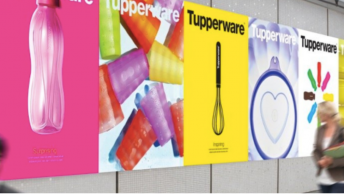Mobile gadgets with video capabilities are the handheld TVs of today’s market. Here’s how marketers are merging branding and direct response via video to bring people in.
Going Mobile

Mobile gadgets allow people to learn about products and brands. Therefore, they can make shopping decisions and purchases in whole new ways. This is why marketers are changing brand-building content into transactional platforms. Video content is what provides the emotional draw that boosts results.
The growth of mobile video can’t be denied. It is getting more popular every day because of the rise of mobile devices. Companies are trying to create entertaining content that gets people excited. This can range from a 10-second ad to an internet mini-series.
Marketers are getting better and better at making this type of content. However, some are even taking it a step further. They are doing this by putting a direct response angle in their strategies.
SEE ALSO: When Are Mobile Owners Using Apps?
Apps For All
Ultimately, marketers know that mobile direct response can be very powerful. However, it is not always the easiest strategy to use. According to a survey by the Mobile Marketing Association and RadiumOne, marketers have very strong opinions on when, where, and on who it is best to implement it.
Marketers feel that social media comes first when it comes to branding campaigns. However, direct response initiatives are an ideal way to target repeat buyers. Most find that purchase data is the most popular way to rank the effectiveness of mobile direct response. According to the survey, 38% of people ranked it as the number one metric.
So, video is a big focus for many brands. They are using it to bring their branding and direct response efforts together on mobile.
How Dollar Shave Club Does It
One excellent example of this is Dollar Shave Club. They are a marketer of personal grooming products. However, they have a mobile app that features more than just calls to purchase products. Their app contains weekly video content and engaging articles about topics in their grooming niche. They offer consumers fun and helpful content outside of marketing products and ads.
The app combines fun content with usual commerce app offerings. These include:
- places to sign up
- places to make purchases
- signing up to get monthly razor shipments
- sending gifts
- adjusting purchase details.
Content delivered in this manner has one big advantage. First, the mobile app content is received. After that, its success can be measured immediately due to its format.
The Lyft Example
Lyft Inc., is a ride-hailing service that is available in over 130 US cities. They recently attempted to experiment with their branding by re-working their video brand awareness ads. They made them into direct-response ads which offered a free download of the Lyft mobile app.
Lyft discovered that star-power made a big difference. They made direct response videos both with and without former NBA star Shaquille O’Neal. Those with a celebrity did better than those without. Aman Govil, head of the art, copy, and code projects team at Google had this to say:
“The Shaq ad, for example received 8% higher clickthrough rates than Lyft’s traditional direct response ad and a similar conversion rate to those ads that were designed specifically to drive conversions, or installs. The lesson here: Make sure to test and learn how all your creative performs on various metrics.”
Don’t Be Afraid to Get Creative
Online media actually provides marketers and branders with a lot of unique opportunities because of its format. Online media gives you infinitely more freedom. So, online ad campaigns can be the home of striking and effective brand images.
Many broadcast ads limit marketers to 15-30 seconds. This is nothing compared to running an ad campaign and the time and control you can have over it.
The key is to express your brand’s image creatively, but also in a way that feels consistent to consumers. Videos should work on several levels. They should not feel forced but should function as both a brand message and a direct response tactic.
Mobile Video is on the Rise
Ironically, while 70% of people report disliking mobile ads, it is what U.S digital marketers are expected to spend most of their money on. MarketingLand predicts that by 2019, 72% of all US digital ad spending will be for mobile advertising.
The importance of taking advantage of mobile brand awareness and sales tactics can’t be overstated. This is because Mobile ads and apps that are personalized by user behavior are likely the future. For one, it has already started. Secondly, it is likely to evolve and change and improve over time. Direct response is one of the best tools out there to get the numbers.
SEE ALSO: Brands Are Learning How to Master Push Notifications Like Publishers
The Benefits of Measuring User Behavior

The desire to produce real-world measurable results drives digital and mobile advertising. Brands are beginning to pick up on the true power of mobile marketing. This is especially true when it’s combined with more traditional direct response tactics.
In reality, there are quite a few ways to measure user behavior. These metrics ultimately tell us how well loved an app is by its customer base. These include:
- Frequency spent with content
- Time spent with the content
- Shares on social media
- Likes
- Purchases
SEE ALSO: Mobile Devices and The In-Store Decision-Making Process
Always Look to the Future
One near-future prediction is that the ways in which user behavior is gathered will advance. This will lead to more and more of apps providing customized interactive experiences for users. Merging content, branding, and direct response will take mobile ads and brands into the future.
Even social platforms are more than getting the idea. Facebook is becoming a major source of mobile video. They don’t just have content from other sources anymore. According to the media analytics firm Quintly, %85 of the video content hosted on its site was posted there first. This was over the course of a year.
SEE ALSO: How Much Will Social Media Marketing Cost in 2020
Things change. This is because technologies, trends, times, and audience tastes and expectations shift. So, brands must also change. It is necessary if they want to thrive and evolve. Merging branding and direct response in branded mobile video content is still pretty new.
This gives this tactic an edge. However, it may not always be. For now, it is an intriguing strategy that is still fresh. Further, these ideas can help your branded content be truly effective.
What other tactics do you think could be merged with branding for the creation of truly successful ads? Comment below…











